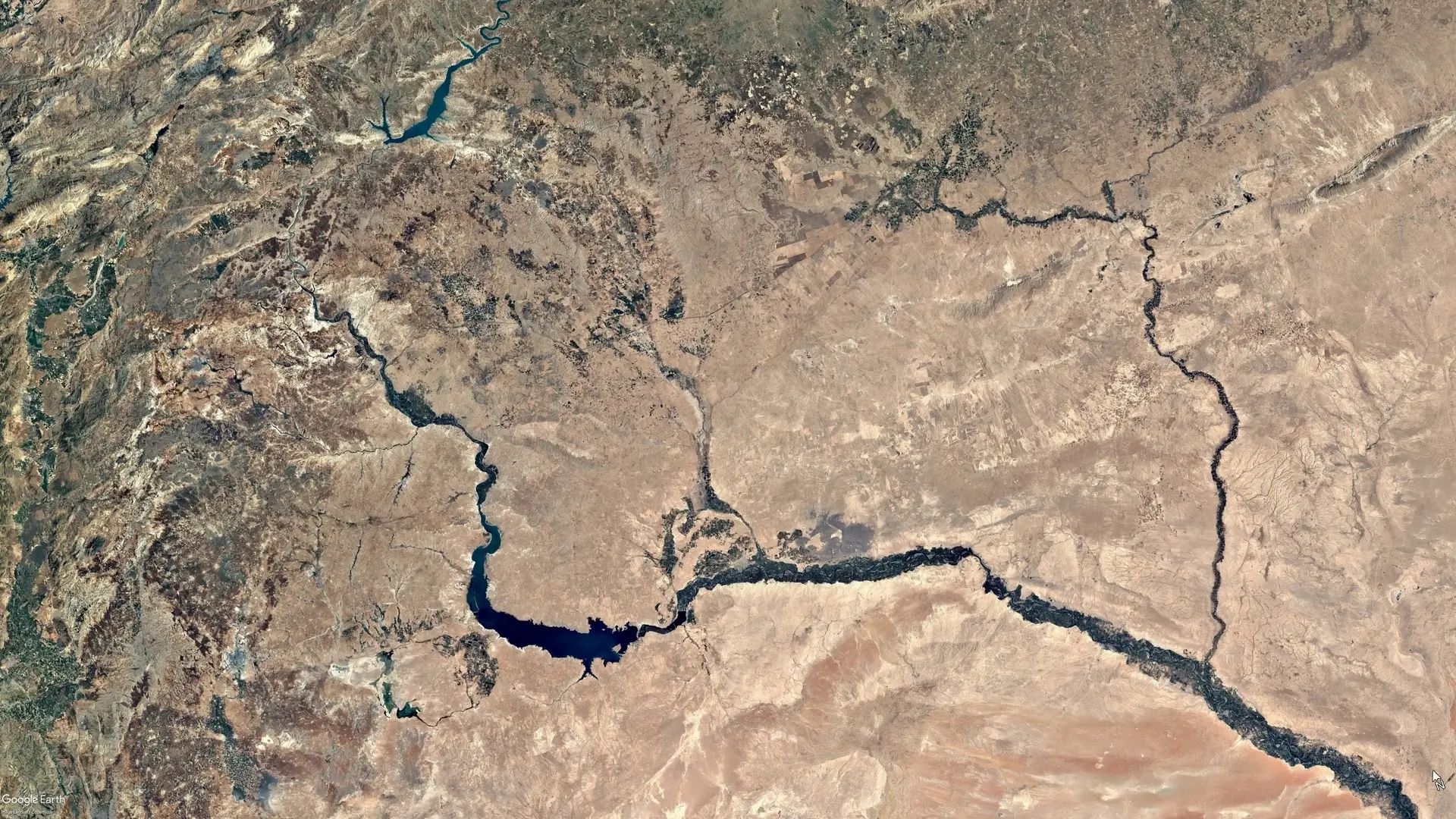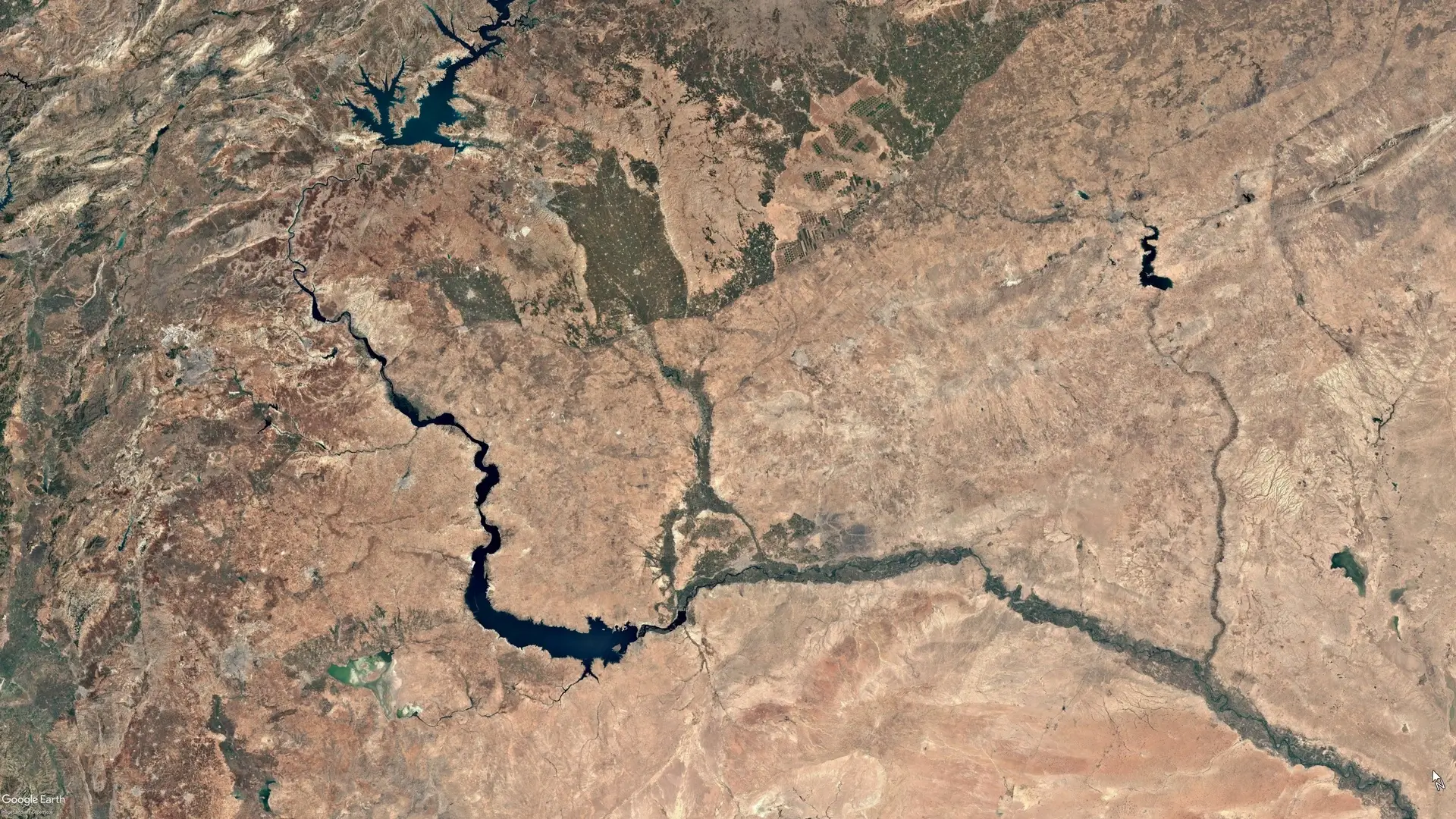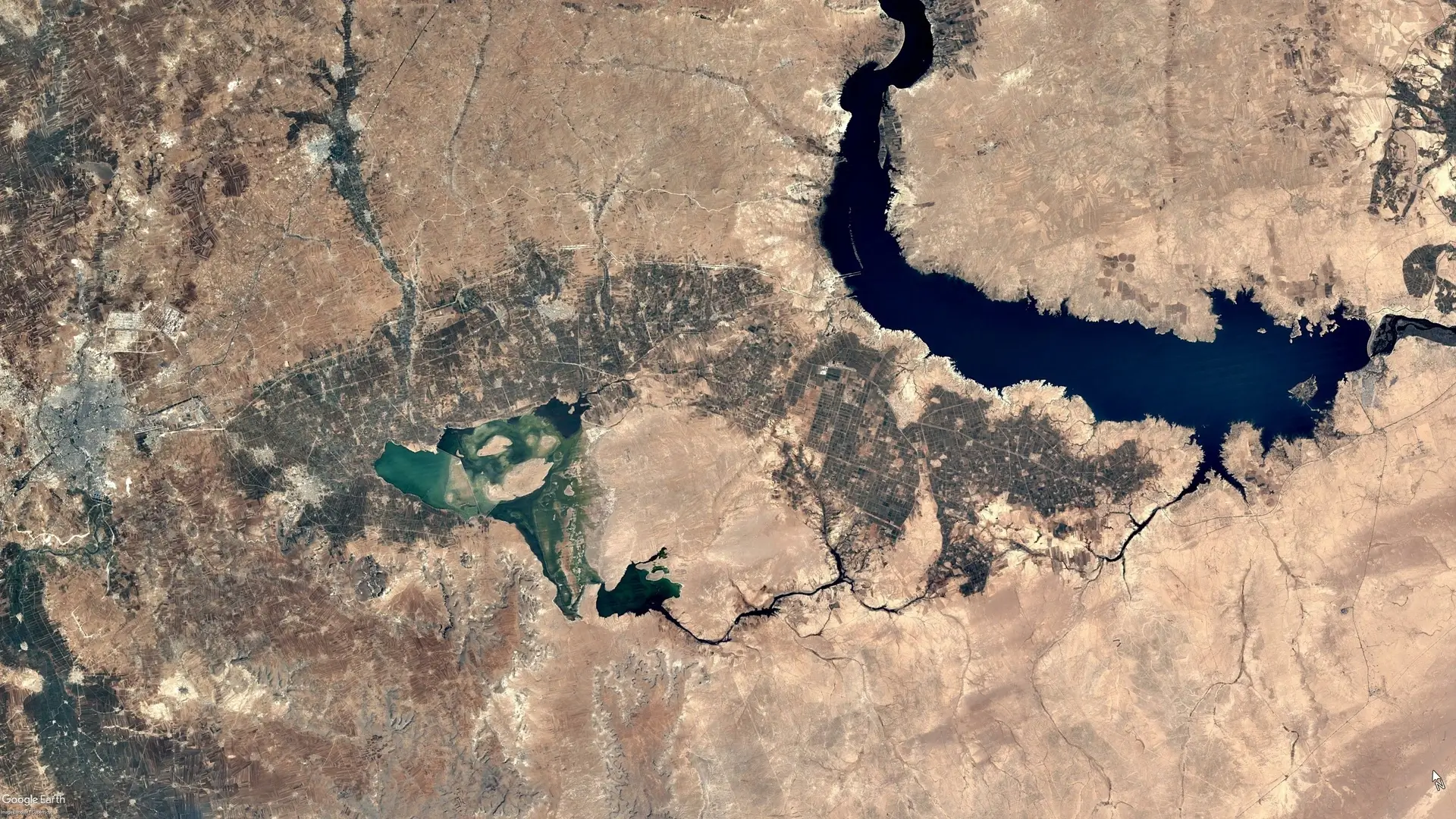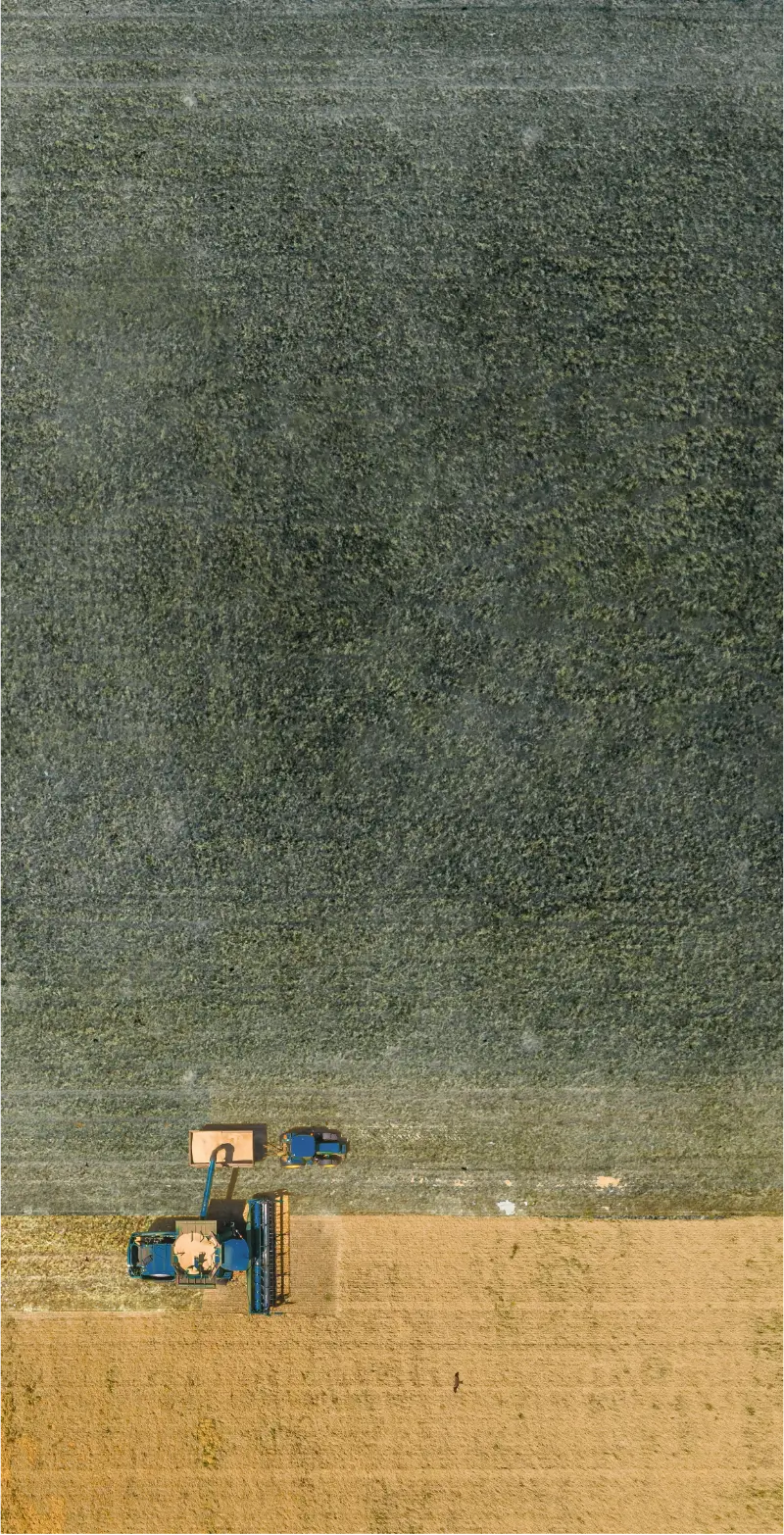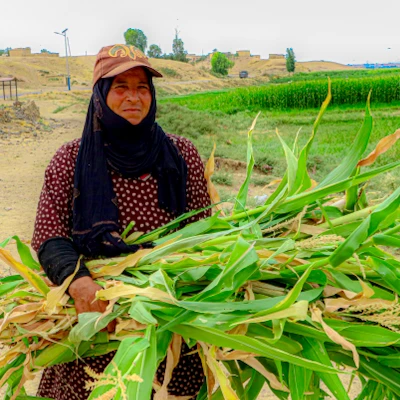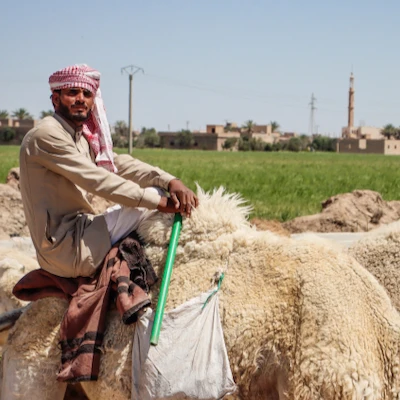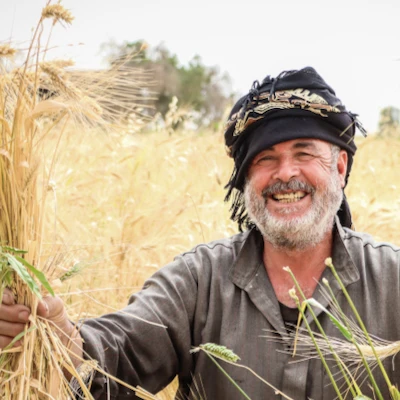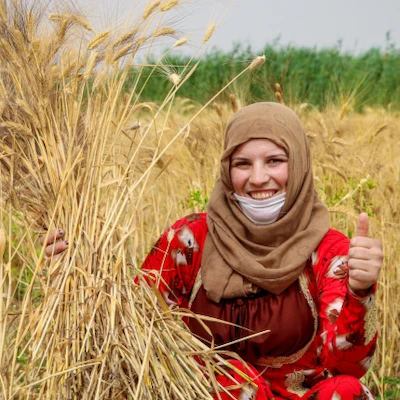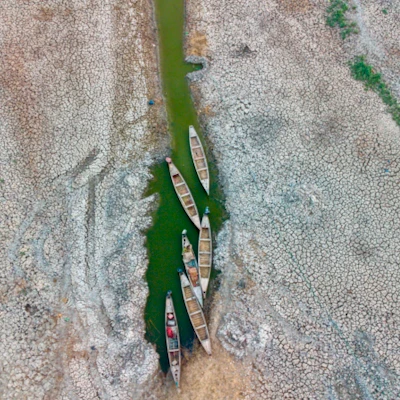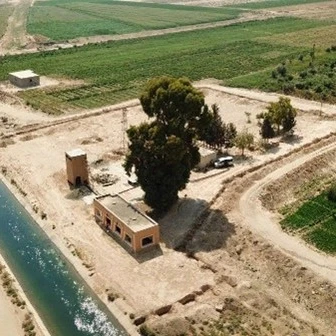
Seeds Of Resilience
How agriculture along the Euphrates is changing in the 21st Century
Published: 22 March 2024
Story by UNDP Syria and Onewater
Syria is a semi-arid country with a Mediterranean climate. Crops such as barley, wheat, and chickpeas are well-suited for this type of climate, as well as drought-resistant trees such as olives.
Agriculture is hugely important for Syrian communities and the national economy. In the late 2000s, agriculture accounted for 40-50% of the total Syrian workforce. In the present day, the sector generates between of Syria’s GDP.
Most of Syria’s agriculture is rain-fed, totalling approximately 75% of all crops.
The remaining 25% are irrigated with groundwater and surface water from reservoirs.
.webp?alt=media&token=389af0ce-d21c-45fe-8fc2-b16994386322)
During the second half of the 20th Century, the Euphrates’ riparian states experienced high population growth rates and rapid development. This encouraged governments to increase domestic food production by establishing large irrigation projects.
Consequently, agriculture became the largest water consumer in the states, with 78%, 88% and 73% in Iraq, Syria and Turkey respectively.
In recent times, agriculture in the Euphrates basin has become increasingly vulnerable due to a range of factors, including unsustainable water management practices, land use change, ongoing conflicts, and the impacts of climate change. Declining agriculture has led to increased levels of food insecurity across Syria.
LAND USE CHANGE
Data and satellite imagery show that land use change in Syria changed significantly since 2010. From 2010 to 2014 the cultivated area declined by 14.4% (690,000 ha). By 2014, the GDP of the agricultural sector in Syria had also decreased by 41%, compared to 2010.
Since 2014, the total cultivated land area has increased again by 231,000 ha. Overall, cultivated areas have decreased over the last decade
Why did this happen?
Well, it’s complicated. Generally, land use change along the Euphrates can be attributed to 2 factors: internal migration and climate change impacts.
MIGRATION
In 2011, prior to the start of the crisis, the Syrian population was estimated to be 23.5 million. Of this, 47% lived in rural areas.
As the crisis unfolded, many rural communities were displaced or migrated, leaving their fields in the process. The disruption of supply chains as well as soaring prices also, to this date, make it difficult for farmers to afford necessary inputs and equipment.
Coupled with the declining number of agricultural workers in Syria agricultural production decreased and land use changed.
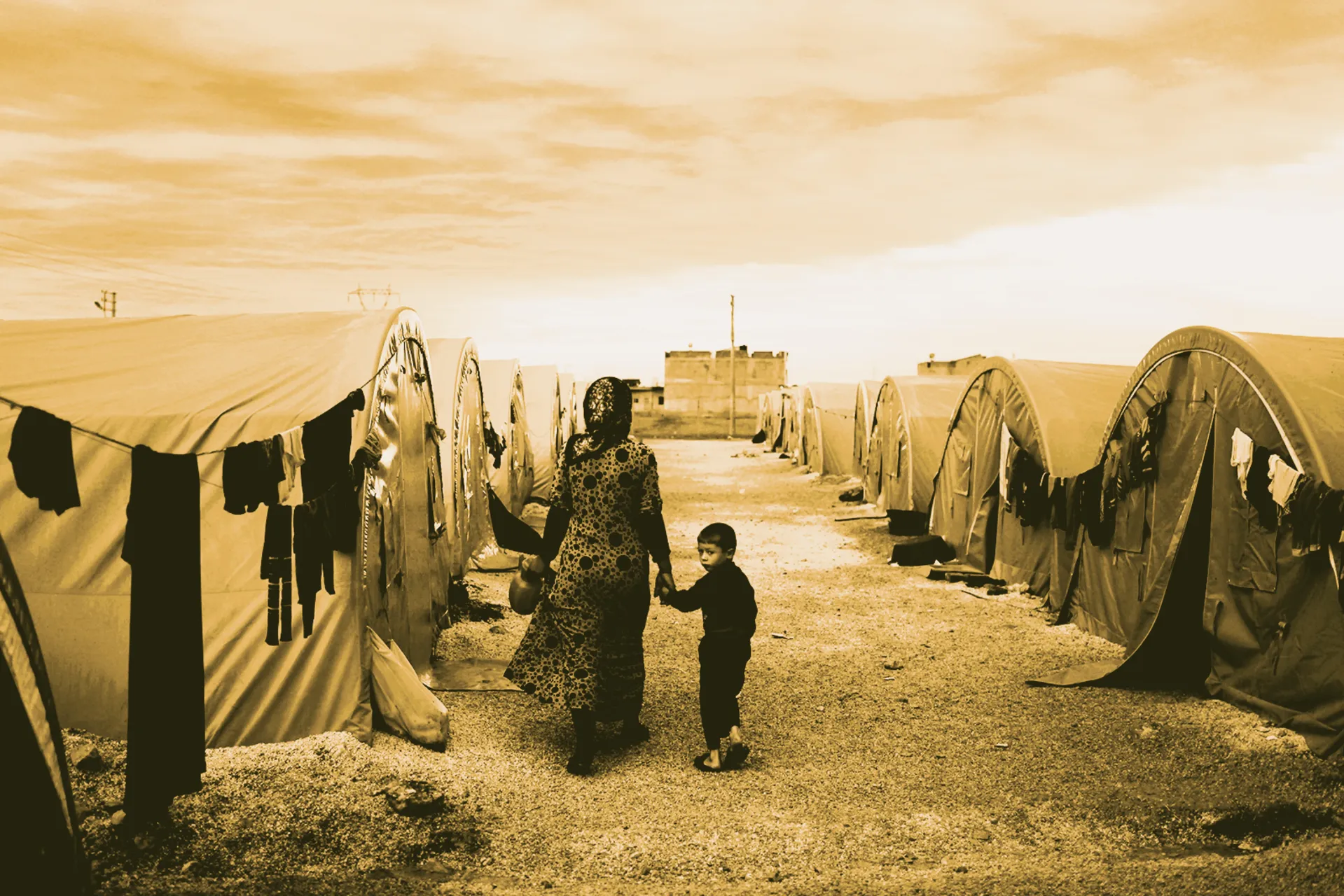
CLIMATE CHANGE
The effects of rising temperatures and lower rainfall is also causing a number of negative impacts on Syrian agriculture.
For example, as a result of precipitation decreasing by 50-70%, 80% of Syria’s rain-fed wheatfields were not planted in 2021. Additionally, it is estimated that barley production during 2021 was only 268,000 tonnes—just 10% of the 2019 and 2020 harvests.
.webp?alt=media&token=eef2dce8-9a05-42df-aa75-88eb08c1be90)
We used to cultivate about 50 tons of apricots every year, but many of the trees have withered from lack of water. This year, the production did not exceed 500 kilos,” said Muhamad, a 56-year-old farmer and father of six.
”Rural Damascus
Farmer in Zebdine
FOOD INSECURITY
Lower agricultural production, accompanied by rising food prices, have heightened food insecurity in the region
In 2021, it was estimated that 12 million Syrians were food insecure. This accounted for approximately 60% of the total population.
Of these 12 million, 2.5 million people are suffering from severe food insecurity and could not survive without food assistance.



EFFORTS & PROJECTS
Efforts are currently underway to ensure food security in the region. Both the government and local administrations, along with numerous emergency relief organisations, have played a significant role in alleviating levels of starvation amongst the Syrian population in recent years.
Additionally, UNDP and its partners are actively working to scale up climate-resilient and water-efficient agriculture in the basin.
It is important to recognise that agriculture will remain under threat unless the issues of causes are effectively addressed. A factor that is increasingly exacerbating challenges is water quality.
